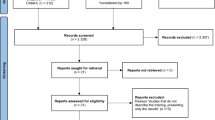Abstract
Introduction
With the increasing adoption of peroral endoscopic myotomy (POEM) as a first-line therapy for achalasia as well as a growing list of other indications, it is apparent that there is a need for effective training methods for both endoscopists in training and those already in practice. We present a hands-on-focused with pre- and post-testing methodology to teach these skills.
Methods
Six POEM courses were taught by 11 experienced POEM endoscopists at two independent simulation laboratories. The training curriculum included a pre-training test, lectures and discussion, mentored hands-on instruction using live porcine and ex-plant models, and a post-training test. The scoring sheet for the pre- and post-tests assessed the POEM performance with a Likert-like scale measuring equipment setup, mucosotomy creation, endoscope navigation, visualization, myotomy, and closure. Participants were stratified by their experience with upper-GI endoscopy (Novices <100 cases vs. Experts ≥100 cases), and their data were analyzed and compared.
Results
Sixty-five participants with varying degrees of experience in upper-GI endoscopy and laparoscopic achalasia cases completed the training curriculum. Participants improved knowledge scores from 69.7 ± 17.1 (pre-test) to 87.7 ± 10.8 (post-test) (p < 0.01). POEM performance increased from 15.1 ± 5.1 to 25.0 ± 5.5 (out of 30) (p < 0.01) with the greatest gains in mucosotomy [1.7–4.4 (out of 5), p < 0.01] and equipment (3.4–4.7, p < 0.01). Novices had significantly lower pre-test scores compared with Experts in upper-GI endoscopy (overall pre-score: 11.9 ± 5.6 vs. 16.3 ± 4.6, p < 0.01). Both groups improved significantly after the course, and there were no differences in post-test scores (overall post-score: 23.9 ± 6.6 vs. 25.4 ± 5.1, p = 0.34) between Novices and Experts.
Conclusions
A multimodal curriculum with procedural practice was an effective curricular design for teaching POEM to practitioners. The curriculum was specifically helpful for training surgeons with less upper-GI endoscopy experience.




Similar content being viewed by others
References
Pandolfino JE, Kahrilas PJ (2013) Presentation, diagnosis, and management of achalasia. Clin Gastroenterol Hepatol 11:887–897
Pasricha PJ, Hawari R, Ahmed I, Chen J, Cotton PB, Hawes RH, Kalloo AN, Kantrsvoy SV, Gostout CJ (2007) Submucosal endoscopic esophageal myotomy: a novel experimental approach for the treatment of achalasia. Endoscopy 39:761–764
Inoue H, Minami H, Kobayashi Y, Sato Y, Kaga M, Suzuki M, Satodate H, Odaka N, Itoh H, kudo S (2010) Peroral endoscopic myotomy (POEM) for esophageal achalasia. Endoscopy 42:265–271
Zendejas B, Brydes B, Hamstra SJ (2013) State of the evidence on simulation-based training for laparoscopic surgery. Ann Surg 17:212–215
De Win G, Van Bruwaene S, Kulkarni J, Van Calster B, Aggarwal R, Allen C, Lissens A, De Ridder D, Miserez M (2016) An evidence-based laparoscopic simulation curriculum shortens the clinical learning curve and reduces surgical adverse events. Adv Med Educ Pract 7:357–370
Kolozsvari NO, Feldman LS, Vassiliou MC, Demyttenaere S, Hoover ML (2011) Sim one, do one, teach one: considerations in designing training curricula for surgical simulation. J Surg Educ 68:421–427
Vassiliou MC, Kaneva PA, Poulose BK, Dunkin BJ, Marks JM, Sadik R, Sroka G, Anvari M, Thaler K, Adrales GL, Hazey JW, Lightdale JR, Velanovich V, Swanstrom LL, Mellinger JD, Fried GM (2010) Global assessment of gastrointestinal endoscopic skills (GAGES): a valid measurement tool for technical skills in flexible endoscopy. Surg Endosc 24:1834–1841
Eleftheriadis N, Inoue H, Ikeda H, Onimaru M, Yoshida A, Hosoya T, Maselli R, Kudo SE (2012) Training in preoral endoscopic myotomy (POEM) for esophageal achalasia. Ther Clin Risk Manag 8:329–342
Author information
Authors and Affiliations
Corresponding author
Ethics declarations
Disclosures
Tomokazu Kishiki, Brittany Lapin, Chi Wang, Brandon Jonson, Lava Patel, Matthew Zapf, Matthew Gitelis, Maria A. Cassera, Lee L. Swanström, and Michael B. Ujiki have no conflicts of interest or financial ties to disclose.
Rights and permissions
About this article
Cite this article
Kishiki, T., Lapin, B., Wang, C. et al. Teaching peroral endoscopic myotomy (POEM) to surgeons in practice: an “into the fire” pre/post-test curriculum. Surg Endosc 32, 1414–1421 (2018). https://doi.org/10.1007/s00464-017-5823-3
Received:
Accepted:
Published:
Issue Date:
DOI: https://doi.org/10.1007/s00464-017-5823-3




